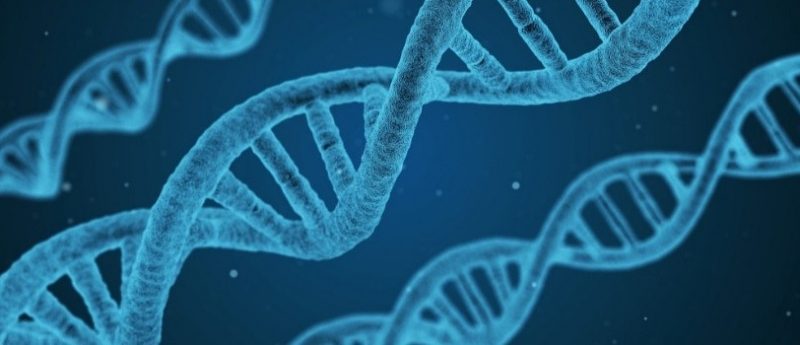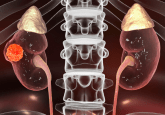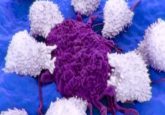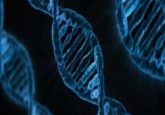Novel analysis technique could improve accuracy of detecting cancerous DNA in lung cancer

A newly developed technique can detect small-DNA fragments containing cancerous genetic material in blood samples from patients with non-small cell lung cancer (NSCLC). The results, recently published in Annals of Oncology, showed that the novel liquid biopsy could identify the genetic variants responsible for driving the cancer or making it treatment resistant.
In a collaborative study from Memorial Sloan Kettering Cancer Center (NY, US), MD Anderson Cancer Center (TX, US) and the Dana-Farber Cancer Institute (MA, US), blood samples were taken from 127 patients, each newly diagnosed with advanced NSCLC that had metastasized to other regions of the body.
The patients could be split into three groups; 91 had cancer driven by, or made resistant to treatment by genetic mutations that had previously been identified in the tissue biopsy, 19 had no such mutations detected by biopsy and 17 had not had a biopsy.
“Our results suggest that liquid biopsy can play a complementary role to tissue biopsy in the treatment of lung cancers. Due to its high specificity of 100%”
Analyzing the blood samples of patients using ultradeep next generation sequencing, researchers were able to read the cancerous DNA fragments, known as cell-free DNA (cfDNA), an average of 50,000 times, ensuring a high degree of accuracy in detecting variants from any one of the 37 genes commonly associated with lung cancer.
In comparison to levels of cfDNA from non-cancerous cells, that of tumors is very small and therefore it is important to be able to detect the faint signals and distinguish this from the non-cancerous background noise. In order to do this, the patient’s white blood cells were sequenced and used to filter out the non-cancer signals from the bone marrow in a process known as clonal hematopoiesis filtering.
The liquid biopsy was tested blind, allowing for the comparison between tissue and liquid based methods in an unbiased manner. This enabled the researchers to determine the usefulness of the liquid biopsy in detecting mutations in patients who lacked adequate tissue for testing.
“We found that of the 91 patients in whom the tissue biopsy had found cancer-driving mutations, analysis of the liquid biopsy detected 68, giving a true positive rate of 75%. Among the 19 patients without mutations detected in the tissue biopsy, the liquid biopsy also did not detect any mutations, meaning there were no false positives and giving a true negative rate of 100%,” explained study leader Bob Li (Memorial Sloan Kettering Cancer Center).
Li went on to say that the 75% true positive rate compares favorably with current digital methods used for detecting mutations.
“Our results suggest that liquid biopsy can play a complementary role to tissue biopsy in the treatment of lung cancers. Due to its high specificity of 100%, meaning there were no false positives, liquid biopsy could be performed first and be used to guide treatment, especially when tissue biopsy may be inadequate or not feasible. The caveat is that owing to its modest true positive rate of 75%, if the liquid biopsy is negative, a tissue biopsy is still required,” Li added.
This new test could help doctors in determining a prognosis and in choosing the best treatment for the patient. “Liquid biopsy is a promising technology development that could help improve the care of patients. We are carrying out further research into this novel test, and these latest results are a step in the right direction for the field of liquid biopsy,” concluded Li.
Sources: www.eurekalert.org/pub_releases/2019-03/esfm-rdn031819.php; B T Li, F Janku, B Jung et al. Ultra-deep next-generation sequencing of plasma cell-free DNA in patients with advanced lung cancers: results from the Actionable Genome Consortium doi.org/10.1093/annonc/mdz046 Ann. Oncol. (2019)
Related content
https://www.oncology-central.com/disease-area/lung/i-o-optimise-a-multinational-program-providing-read-world-insights-into-lung-cancer-management/
https://www.oncology-central.com/subject-area/cancer-biology-and-pathology/parp-inhibitors-offer-novel-method-for-boosting-immuno-oncology-response/
https://www.oncology-central.com/subject-area/cancer-biology-and-pathology/parp-inhibitors-offer-novel-method-for-boosting-immuno-oncology-response/https://www.oncology-central.com/disease-area/lung/i-o-optimise-a-multinational-program-providing-read-world-insights-into-lung-cancer-management/https://www.oncology-central.com/disease-area/lung/us-fda-approves-the-first-immunotherapy-for-extensive-stage-small-cell-lung-cancer/





